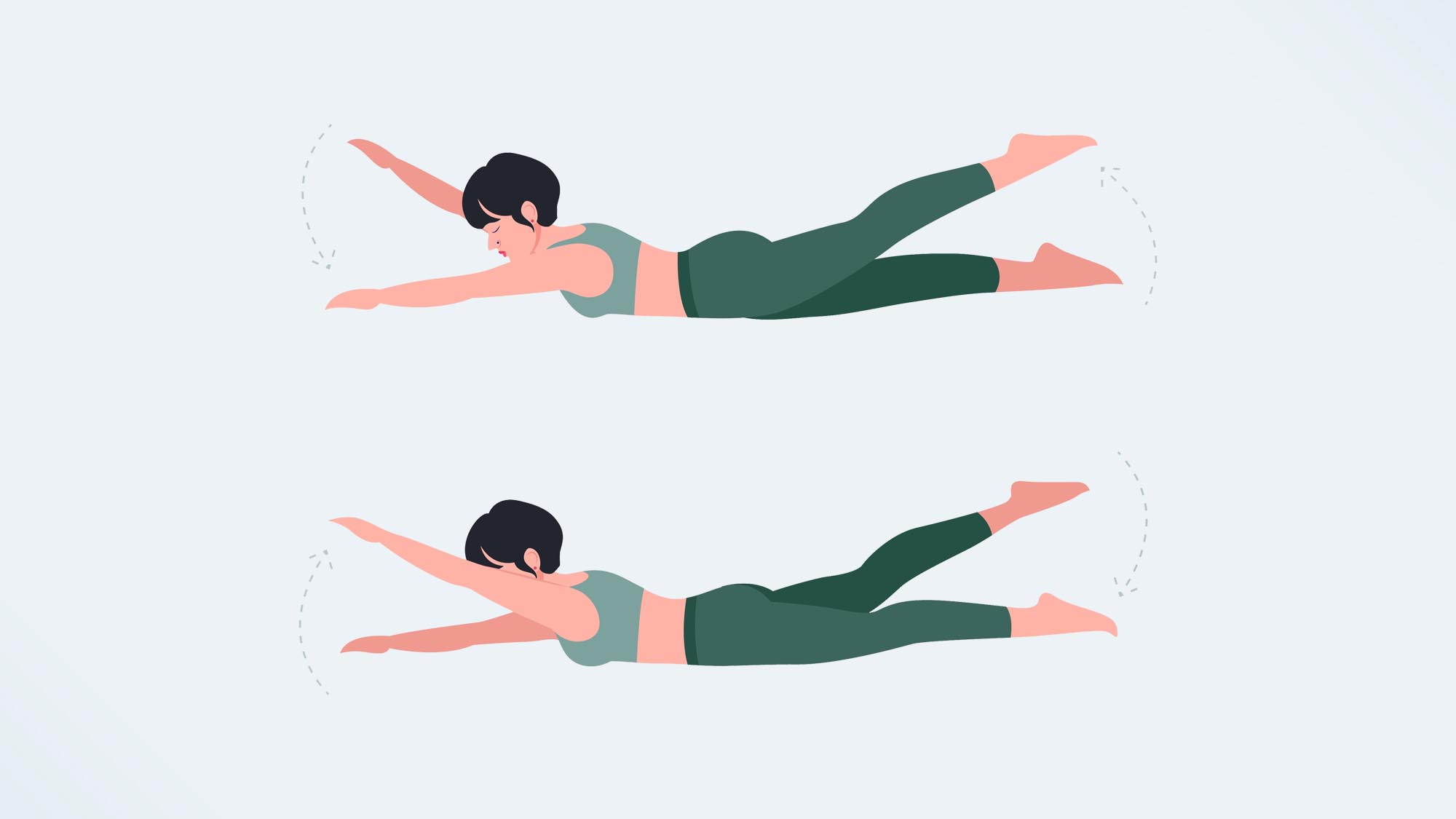I did the swimmer exercise for a week — here's what happened
It’s a curious move that targets lots of muscles, but is it worth the effort?

In this ongoing series of Tom’s Guide articles, I have at least heard of the exercise challenge set by my editor, and in many cases I’ve done them in the past. Not this time: I had never heard of the swimmer. There may be a good reason for that.
What is it?
As I was not familiar with the swimmer (or “swimming”, as it is sometimes — rather unhelpfully — known), I dove deep into the internet and what I found was… not much. Oceans of stuff about actual swimming, and plenty about the strange 1968 Burt Lancaster movie The Swimmer, but oddly little about the exercise. And what I did find mostly featured the word ‘Pilates’. Off went the alarm bells. I have nothing against Pilates, but when I hear the word, I think “flexibility” and that is an area I sometimes find to be a bit of a stretch.
The swimmer is a body-resistance exercise that involves lying face-down on the floor in the superman position (now that one I knew I could do), and, from there, raising and lowering your extended arms and legs. It targets the back, the core, the glutes, hamstrings, and the shoulders. It sounds easy enough: It’s not. And it sounds as if it does an awful lot: I’m not sure about that.
How do I do it?

- Begin my lying face-down, arms extended in front of you, and with your legs straight. Look down rather than ahead, to avoid neck strain.
- Contract your abs and glutes, draw your shoulder blades toward each other, and raise your chest and arms so they are hovering off the floor. At the same time, raise your legs a little, keeping them straight.
- From this position, further raise and then lower your left leg and right arm, then your right leg and leg, in a smooth, controlled “swimming” motion. Do not over-raise your arms or legs, as this will put excessive pressure on your lower back, and don’t allow your hands or feet to touch the floor during the lowering phase of the move.
- Continue alternating for 10-20 seconds. Do three or four sets.
This is what happened when I did the swimmer for a week
Day one
Day one was — and I don’t mean to sugar-coat this — terrible. I couldn’t get much lift from my arms and legs, so that on the downward movement they touched the floor. More worryingly, I felt the move mostly in my lower back, and not in a good way. I was straining, pushing hard into the floor to raise my legs and chest, to get some level of lift. I also felt the move in my glutes, which was moderately reassuring, but nothing in my core. I managed three herky-jerky sets of 10 seconds. At one point I may have matched lifting my right arm with raising my left leg, but I wouldn’t bet on it. And yet, I had the niggling feeling I was preparing my body for the week: “Look, this is what I’m going to be doing every day. You have to get on board.” To which my body was answering: “We’ll see.”
Day two
On day two, I slowed down the movement, mostly to coordinate raising one arm and the opposite leg, but also to try to develop a rhythm and feel the exercise where it is meant to be felt. After three more sets of 10 seconds, I noticed it in my shoulders as well as my glutes. But I was still feeling too much pressure on my lower back. I wondered if this was a move better suited to someone who already does yoga or Pilates; you know, someone pliable. For my money, bending forward is easy, but bending backward is best left to gymnasts and people trying too hard to be liked.
Day three
The following day I managed three sets of 20 seconds and one of 30 seconds, so my body was adjusting to the exercise. I began to feel it higher in my back and in my hamstrings, but I tended to sort of slide left and right as I did the move. The trick is to maintain a straight line, and only move your arms and legs, so slow down and concentrate. Breathe slowly, I told myself. I was doing a lot of talking to myself, which is never a good sign.
Day four
There was some more improvement on day four: three sets of 30 seconds. I was rising higher, but felt my legs were bending slightly and moving apart. This made it easier, but was bad form. Only now was I beginning to feel the move in my core, and not much at that. Most of the effort was still coming from my lower back (which made me wary of the move), glutes and hamstrings.
Get instant access to breaking news, the hottest reviews, great deals and helpful tips.
Day five
On day five, I decided I hated the move. It felt a waste of my time and energy. There are plenty of other moves out there that strengthen the lower back, such as the bird dog and the superman, and no shortage of moves to work your glutes, including various glute bridge exercises. The core? You’ve got the plank in all its variations, as well as sit-ups and crunches. The hamstrings? Look no further than the excellent good morning exercise. I could go on, but you get the picture. These moves may not target all the muscles hit by the swimmer, but they are, to my mind, more efficient and do not put such a strain on the lower back.
Day six
On day six, I found I had made significant improvement. I was more easily able to engage my core to help raise my chest and legs: A good starting point. I was able to hold form, too, and managed two sets of 35 seconds and one of 40 seconds. But the odd thing was that though I had improved, which always happens with these challenges, I did not care. And that was new.
Day seven
At the end of the week I was glad to be done with the exercise. The chances of my doing it again are zero. It may be a wonderful move for people with greater flexibility, but I was constantly aware that my lower back was under strain and there are many other ways to work the same muscles the swimmer targets. Do try it, but if you have lower back issues, check with a medical professional before you start.
More from Tom's Guide
- I did a 7-minute pillar bridge plank every day for a week — here are my results
- Forget sit-ups — these bodyweight ab exercises will define your core
- Forget crunches — these 5 standing ab exercises blast your core
John is a writer and editor based in London. He was worked for magazines such as Runner’s World, Men’s Health, Women’s Health and Cosmopolitan. A keen runner, what he lacks in ability he makes up for with enthusiasm and excuses.

